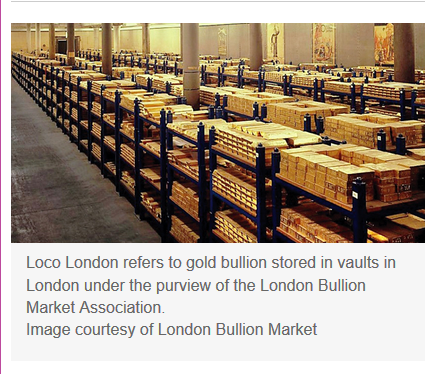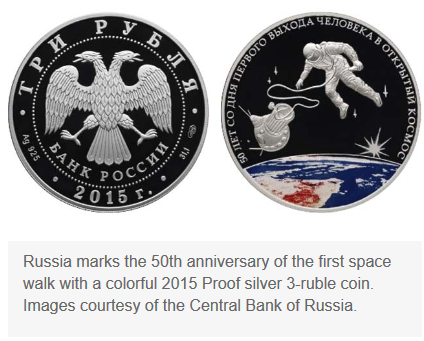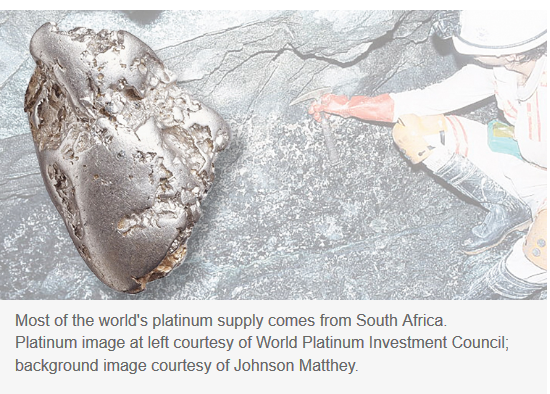Silver might be going up in value?
The world’s second largest primary silver mine, Tahoe Resources Escobal Mine, was forced to shut down operations in Guatemala by a ruling from the country’s Supreme Court. This was due to a provisional decision by the Guatemalan Supreme court in respect of a request by CALAS, an anti-mining group, for an order to temporarily suspend the license to operate the Escobal Mine until there is a full hearing.
WORLD’S 2ND LARGEST SILVER MINE SHUT DOWN: Implications For Company & Market
https://srsroccoreport.com/worlds-2nd-largest-silver-mine-shut-down-implications-for-company-market/
July 9, 2017 - While this story has been out for a few days, I believe there is a great deal of misinformation on the Mainstream and Alternative media about the current situation and future outcome of Tahoe’s flagship Escobal Mine. Some analysis suggests that this is just a small speed-bump for Tahoe, so when they are able to address disputed regulatory issues, production and profits will shortly return once again.
However, there also seems to be a another side to the story that could cause more problems for Tahoe with a much longer suspension time than the company is publicly stating. For example, the following was published in the article …
Tahoe Resources forced to halt Escobal mine in Guatemala:
http://www.mining.com/tahoe-resources-forced-halt-escobal-mine-guatemala/
While Tahoe is preparing for a three-month mine suspension, Haywood analysts project no production from the mine for the remainder of 2017.
Here we can see that the company (Tahoe) is very optimistic that production at Escobal will start back in three months, while Haywood analysts forecast operations won’t likely resume this year. So, who should we believe, or which forecast is more correct? Before we get into the details, let’s first look at the impact of suspending the 2nd largest primary silver mine in the world on the market.
A Shutdown Of The Escobal Mine, Ranked #2 In The World, Would Remove 21 Million Oz Of Supply
According to the 2017 World Silver Survey, Tahoe Resources Escobal Mine ranked #2, behind Fresnillo PLC’s Saucito Mine in primary silver production in 2016. Here are the top five producing primary silver mines in 2016 (Moz – million ounces):
1.Saucito (Mexico) = 21.9 Moz
2.Escobal (Guatemala) = 21.2 Moz
3.Dukat (Russia) = 19.8 Moz
4.Cannington (Australia) = 18.2 Moz
5.Uchucchacua (Peru) = 16.2 Moz
Furthermore, the data in the 2017 World Silver Survey reports that a total of 265 million oz (Moz) of primary silver was produced last year.
Thus, the Escobal Mine represents 8% of total global primary silver mine supply. If Haywood Analysts are correct that production at Escobal may not resume in 2017, than the mine is likely to lose nearly half of the 20-21 Moz forecasted for 2017.
While this is not a great deal of silver compared to total world silver supply of 886 Moz (in 2016), if the Escobal Mine is shut for a longer period of time, or indefinitely, it could impact the silver market over the next few years.
So, again… the big question for investors is, HOW LONG will the ESCOBAL MINE be shut down? Well, let’s look at some information and data that seems to be overlooked by the Mainstream and Alternative media.
What Is The True Nature & Future Impact Of The Suspension Of Tahoe’s Escobal Mine?
First… after the Guatemalan Supreme Court suspended operations at Escobal, Tahoe’s stock price took a real beating falling 33% that day. In the past week, Tahoe’s stock price decline 40%:
A lot of investors were caught by surprise as Tahoe Resources has been making a lot of money from its mines, especially from its Escobal Silver Mine in Guatemala. For example, in 2016 Tahoe Resources reported profits of $118 million on revenue of $784 million.
That is a stunning 15% margin of profit… and the majority of that profit was from the Escobal Mine.
Second …. the rich profits from the Escobal Mine came at a cost. And the cost was in the way of “serious human rights violations through its operations”, stated by several sources. Unfortunately, many investors that follow the Mainstream financial media do not understand that
the Escobal Mine has been, and continues to be, a subject of human rights abuse and violations from day one.
I wrote about this in my 2014 article,
Top Silver Supply Figures & Forecasts Are Incorrect:
https://srsroccoreport.com/top-silver-supply-figures-forecasts-are-incorrect/
Escobal will become a big player with forecasted silver production in 2014 of 18-20 million oz. Unfortunately for Tahoe Resources, the locals are not too happy with their Escobal mine. There have been murders and killings on both sides of the protest.
This is by no means a small matter by a few disenfranchised locals:
Tens of Thousands Oppose Tahoe Resource’s Escobal Project in Guatemala
https://miningwatch.ca/
Tuesday, December 17, 2013
(Guatemala City/Ottawa) Contrary to Tahoe Resources’ recent claims, tens of thousands of people oppose its Escobal project in southeastern Guatemala. Repression and violence have been the outcome of company and government efforts to install the project without social support. A recent high-court decision in Guatemala reinforces the legitimacy and importance of local decision-making processes.
More than half of the communities in the municipality of San Rafael las Flores, where the Escobal project is located, have declared opposition to the mine. In five neighbouring municipalities, in the departments of Santa Rosa and Jalapa, a majority have voted against the mine in municipal referenda, in which tens of thousands of people participated. The most recent vote took place on November 10th in the municipality of Jalapa, department of Jalapa. Over 23,000 people participated with 98.3% voting against mining and 1.7% in favour.
This is a perfect example of what Jim Sinclair states “As the wrong way to go about starting up a mining project in a foreign country.” Jim believes you must have the support of the locals, or the project will be doomed for failure.
And it didn’t help Tahoe Resources PR one bit when their contracted head of security, Alberto Rotondo gave direct orders to assassinate members of the community of San Rafael Las Flores.
Tahoe Resources executive in Guatemala orders killing of protestors
http://www.minesandcommunities.org/article.php?a=12291
“The preliminary investigations found that Rotondo gave the order to attack the community, he also ordered the crime scene to be cleaned up and change the police report.”
The information reveals Rotondo making several statements: “God dam dogs, they do not understand that the mine generates jobs”. “We must eliminate these animals’ pieces of shit”. “We can not allow people to establish resistance, another Puya no”. “Kill house sons of Bitches”
Rotondo was apprehended at the airport La Aurora, when he trying to flee the country. Wire tapping of conversations between him and his son reveal that he planned to leave Guatemala for a while, because “I ordered to kill some of these sons of Bitches.”
What seems to be missing from the current license suspension of the Escobal Mine is the extremely negative history it has had with the local community. As stated above, Tahoe’s former contracted head of Security, Alberto Rontondo gave the direct order to assassinate members of the San Rafael Las Flores community.
While the wire-tapped conversation between Alberto Rontondo and his son, where he says, “I ordered to kill some of these sons of Bitches”, was published in the media, it didn’t get much coverage in the Mainstream press. This was BAD NEWS for a large corporate mining company, so many news agencies seemed to just ignore it.
So…. the assumption by many WESTERN investors that Tahoe Resources is only dealing with pesky legal regulatory issues, is a seriously inaccurate assessment that could cost them dearly going forward. Now, I am not saying that Tahoe’s Escobal Mine will not be able to return to operating status, but there are more serious issues that are coming to light that could be quite detrimental for the company going forward.
For example…. according to the website,
Tahoe On Trial, they published the following:
https://tahoeontrial.net/the-bigger-picture/
The legal cases against Tahoe Resources are being carried out in a larger context of opposition to the Escobal mine. The violence, repression, and criminalization community leaders continue to face is not limited to what transpired on April 27, 2013.
THE ESCOBAL PROJECT DEPENDS ON A MILITARIZED SECURITY STRATEGY TO SUPPRESS OPPOSITION AND HAS LED TO VIOLENCE AND CRIMINALIZATION.
1. In 2011, Tahoe Resources hired a US security and defense contractor – International Security and Defense Management, LLC – that boasts experience with corporations working in war zones like Iraq and Afghanistan to develop a security plan that has treated peaceful protest and community leaders as if they were armed insurgents.
2. In June 2012, Tahoe sued the Guatemalan government, stating that protests were hindering its operations and that the State was not doing enough to allow its activities to proceed.
3. Between 2011 and 2013, some 90 people were slapped with unfounded criminal charges and made to endure legal processes causing them distress and hardship. Several spent months in jail before being cleared of all charges.
This is just the tip of the ESCOBAL MINE PROTEST ICEBERG… I could fill pages. However, those who believe the protests have gone away and now the public is totally supportive of the Escobal Mine, are completely being deluded.
If we fast forward to this year, the protests continue as reported in the article on June 23rd, 2017, Guatemala police clear access to Tahoe’s blocked Escobal mine:
…Police have used teargas to clear a public road near the town of Casillas, in south-east Guatemala, of protesters blocking access to Canadian miner Tahoe Resources’ controversial Escobal mine…
This proves that the public protests continue even as the Escobal Mine in in its fourth year of full commercial production.
I would imagine some readers-investors are probably thinking… “Well, this is just a matter for the local and federal governments to deal with in getting the LOCAL PEOPLE to BEHAVE, so they will leave the Escobal Mine alone to continue producing lots of silver and profits.” Well, that is one opinion, but if you think that is a WISE ONE… think again.
Several large Funds have dropped Tahoe Resources from their portfolios due to what they term as, “A HIGH RISK .”
According to the Feb 2017 report titled,
European Report Features Tahoe Resources as a ‘Harmful Investment’, Reveals Billion Dollar Funds Have Divested
https://tahoeontrial.net/tag/divestment/
Tahoe Resources is one of fourteen companies featured as a dangerous investment in the fifth edition of ‘Dirty Profits’ launched today in Hamburg, Germany and edited by the organization Facing Finance.
The publication identifies two billion-dollar European pension funds that have divested from the company, the Netherlands’ Pensioenfonds (PGB) and Norway’s Norges Bank Investment Management. The group calls for binding regulations on financial institutions and for the elimination of this and other harmful investments from their portfolios.
Problems cited include Tahoe Resources’ lack of respect for communities that have peacefully and democratically expressed their opposition to its Escobal mine in southeastern Guatemala, and a campaign of persecution through unfounded legal cases, violent incidents and militarization.
….The article about Tahoe Resources further describes how the company was granted a permit to put the mine into operation with disregard for over 200 individual complaints submitted against the license on the basis of environmental concerns. The officials responsible for this decision resigned in mid-2015 over serious allegations of corruption.
As we can see, the disinvestment of Tahoe Resources by two large European Funds should be a WARNING to investors that things may not be ROSEY for the company going forward.
Please understand, I am not only painting a negative picture for Tahoe, but rather providing additional information that seems to be missing from the Mainstream press. Thus, investors are making decisions without the COMPLETE information or story.
To be honest, as a silver analyst, I like the Escobal Mine’s performance. It is one of the most profitable primary silver mines in the world. However, I view this performance in a vacuum. By that, I mean based on the production and financial data alone. If we include the public and environmental issues, the Escobal Mine seems to be a very BAD DEAL for many of the local people that live adjacent to the mine.
I believe the suspension of Tahoe’s Escobal Mine by the Guatemalan Supreme Court may open a CAN OF WORMS that many individuals or companies invested in Tahoe do not realize or understand.
On the other hand, Tahoe might be able to work with the local people and Guatemalan government to resume operations. That being said, investors need to understand that the Escobal primary silver mine is a much HIGHER RISK than other silver mining companies. So, it would be wise to learn as much as one can before making a longer term investment in the company.










